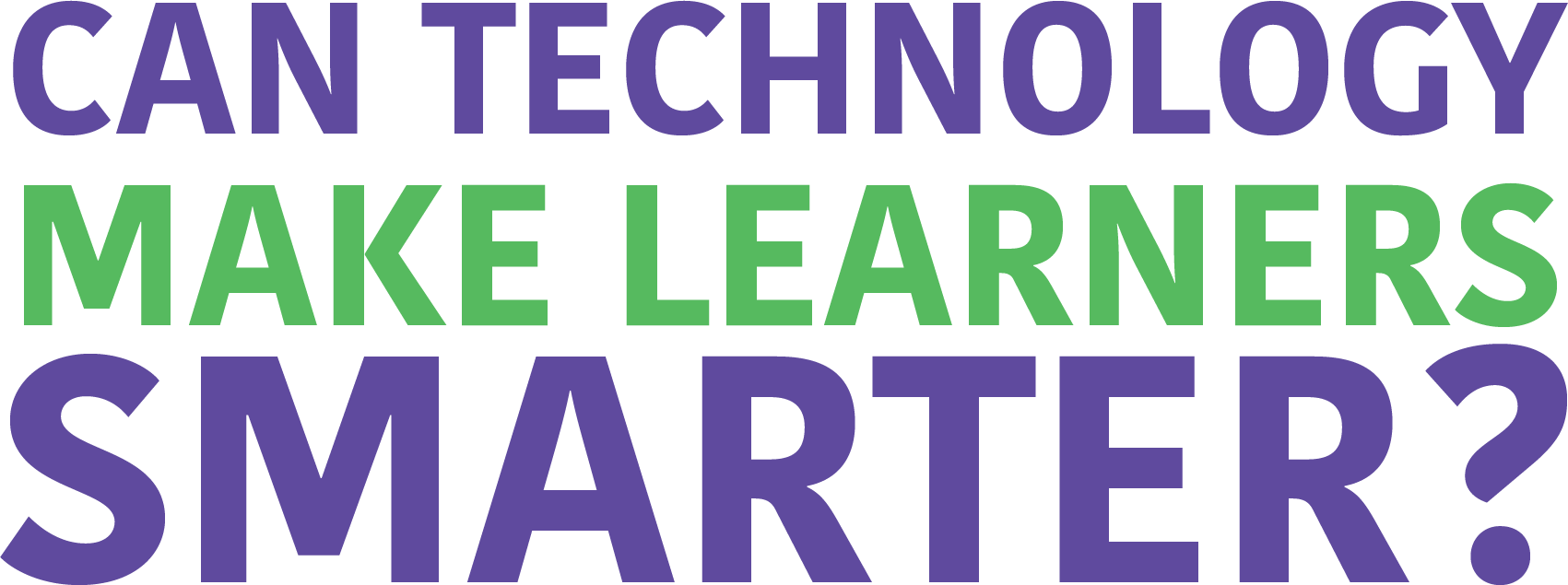
By Betsy Hill

There is one type of technology that has already made a lot of students smarter; it has the potential to help increase academic outcomes dramatically and close learning gaps for struggling students. This technology is computer-based cognitive training and it incorporates the science of learning with video-game software.
BrainWare SAFARI, the most researched, comprehensive, integrated cognitive training tool delivered online, can trace its roots back at least sixty years to two clinicians, an auditory specialist and a vision development specialist. While one addressed hearing issues and the other vision issues, they found they had some things in common. Both saw lots of children who struggled in school and whose parents were looking for help. Both used the Woodcock-Johnson Cognitive Battery to determine why those children were struggling. Both were able, based on that cognitive assessment, to tell parents why their children were struggling, and which cognitive skills were weak. And both were especially tired of telling parents that there really wasn’t very much that could be done about those weaker skills.
Over time, other clinicians joined the effort, contributed additional practices and skills, and codified their procedures into a program. They saw dramatic improvements in the capacity of the children they worked with to stay on task, to hold information in their minds, to be less impulsive and to manage and complete their work. Their academic successes increased. The kids were happier. Their parents were happier. The only problem was that access was limited by the fact that the program had to be delivered one-on-one, in an office, using paper and pencil, cards and other manipulatives, and the person delivering the therapy had to be highly trained. So, it was costly. Parents would spend anywhere from $15,000 to $25,000 or more for their child to complete a cognitive training program.
The solution to making cognitive training more broadly available may seem obvious today, but that wasn’t the case then and for decades after. Computers didn’t exist or were few and not affordable. Early computers were used for calculations and to automate tedious tasks in manufacturing processes. When computing technology branched into entertainment, it was initially in the form of dedicated systems like Atari (1972) and Pac-Man (1980). Educational software followed with CD-ROM titles like Reader Rabbit (1982) and Where in the World is Carmen San Diego? (1985), focused on presenting traditional educational content in more engaging format. And beginning in 1994, the Internet would disrupt existing technology platforms and distribution systems and create completely new opportunities for software developers.
This had never been done before, but if it could be done, it would make cognitive training far less expensive, far easier to use, and capable of helping children on a much broader scale.
The two partners in this marriage were not initially in love with each other. The clinicians had very defined ideas of exactly how the procedures needed to be delivered. They debated everything, including minutia, such as whether a stimulus should be displayed for 0.4 seconds or 0.5 seconds, how early or late a click could be and still count as a correct click to a metronome beat, and what level of mastery would move the user to the next level. Stark and his video-game developers spoke another language altogether.
Bringing the two into alignment took a long time and several million dollars.
The technology selected for the original BrainWare SAFARI program was Macromedia Flash. It was planned as an Internet-enabled rich-client application, sometimes referred to as a blended SaaS (Software as a Service). The activities would run on a local computer in the Flash player, and small packets of data would be communicated between the local computer and a central server so that data could be aggregated and reported, and so a user could log into the program from any computer on which the software had been installed. While Flash was already being used for browser-based applications at the time, it was determined that having the program run on the local computer was necessary to deliver the timing of the activities precisely as the clinicians had specified them. The Internet had too much latency at the time to consistently and faithfully deliver the conditions required for the cognitive training program that had been effective in the clinic. The fact that the web was used to house data in a central location meant that user progress in the program could be monitored remotely and data reported virtually in real time in useful reports. (Note: Advances in technology later enabled the current version of BrainWare SAFARI to run in a browser over the Internet.)
As the development progressed, it became clear that there were many reasons to believe that the marriage could be very successful. The technology could deliver on the key requirements for an effective cognitive development program, in accordance with crucial neuroscience principles.
The general term for the brain’s ability to change and to develop in response to its environment and the demands being placed on it is “neuroplasticity.” Essentially, the human brain develops by organizing itself, creating and pruning neural pathways, based on its unique experiences. Brain development and specific patterns of neural connections are not genetically predetermined in the way that attributes like red hair or blue eyes are determined. While intellect and learning ability are guided by our genetic code, they arise in significant part through the process of development. The plasticity of the brain is greater in children, but the brain exhibits the ability to change and develop throughout life.
BrainWare SAFARI, the most researched, comprehensive, integrated cognitive training tool delivered online, can trace its roots back at least sixty years to two clinicians, an auditory specialist and a vision development specialist.
Cognitive skills are highly integrated in effective brain functioning. When our brains perform a variety of automatic functions simultaneously, those activities must be coordinated to be effective (seeing and motor control, to give a simple example, in eye-hand coordination). If certain skills are weak or deficient, that will impact the efficiency of other mental processes and the overall effectiveness of mental functioning.
Repeating a single skill over and over can lead to improvement in that skill and ultimately automaticity, but the integration of multiple skills is what pushes critical skills more quickly to the nonconscious level. The approach of putting demands on multiple skills at the same time, referred to as “cognitive loading,” is exploited in a comprehensive “cross-training” approach that integrates multiples skills within an exercise and across exercises. It is believed that effective cross-training significantly enhances the transfer of stronger cognitive skills to tasks beyond the specific tasks that are trained.
Principle 4: Progressive challenge
Cognitive development occurs at the outer edges of our competence. If a task is too far above our current state of development, we will become frustrated and may not persist. If tasks are too easy, we become bored. The optimal level of challenge is sometimes called the Zone of Proximal Development. BrainWare SAFARI was designed with the methodical sequencing needed for “smart practice” (intense and rewarding repetition). This means that they avoid the kind of predictable progression that would cause the brain to lose interest and engage with less intensity.
The feedback in BrainWare SAFARI was designed to be. There is no waiting to have a challenge or level scored; the computer response is instantaneous. Positive encouragement is offered continuously as the user progresses through the program. Human coaching is an important aspect of feedback and the program is designed to incorporate a trained and supportive coach.
In the beginning, there was Beta
Families with students at Christian Heritage Academy in Northfield, IL volunteered to participate in a controlled trial of the program, with students taking multiple tests from the Woodcock-Johnson Cognitive Battery and some of the WCJ tests of achievement as a pre-test and post-test. Students would be assigned to a treatment group (using BrainWare SAFARI three to five times per week for 45 minutes to an hour, for 11 weeks) or a control group (following their normal routine). To the extent possible, assignment of the students was random.
You could have heard a pin drop on the carpeted floor of the conference room where the results were presented. Students in the treatment group experienced an average of 4 years and 3 months improvement in their cognitive skills, compared to 4 months improvement for those in the control group. Students in the treatment group improved their academic performance an average of 1 year and 11 months, compared to just 1 month for the control group.
The results were consistent with the dramatic growth that students had been experiencing in one-on-one therapy in a clinical setting, working at home with their parents as their coaches. And both students and parents enjoyed it.
Since that time, use of cognitive skills training has been gaining consistent steam, and many independent schools, districts and private schools have experienced remarkable gains in their academic results using the original BrainWare SAFARI as well as other cognitive skills training based on the work of Stark and the BrainWare Learning Company. Today, cognitive assessment is done prior to any skills training, and a coach is utilized to guide the learner through the process. As predicted, costs have decreased dramatically since the days of skills training delivered exclusively through clinics. At this point, BrainWare SAFARI is the most researched, comprehensive, integrated cognitive skills training delivered online anywhere in the world.
Cognitive training must take a multi-disciplinary approach to have lasting, meaningful results. Integrating the best practices from clinical and educational psychology, auditory and vision developmental therapy, occupational therapy, speech and language pathology, neurology, and others builds a foundation for the right kind of cognitive training. No single discipline knows everything about how the human brain works. Combining the best information from all of these areas of expertise is the cornerstone of effective cognitive training, and that is how BrainWare SAFARI cognitive training software used in our programs was designed.
At Urey Middle school, 69% of students who used BrainWare SAFARI substantially improved their performance on cognitive tests of reasoning skills, memory skills and executive functions, in one semester, not just on one or two skills, but on average across all the skills measured. Moreover, the students also improved their performance on the annual state standardized assessment they took following their cognitive training. 70% of the 7th grade students improved increased a full category (from below to approaching or from approaching to at/above proficiency). Their teachers saw increased focus, reasoning ability, and self-confidence, including their overall attitude towards school and their willingness to take on more challenging assignments.
According to Tom Hughes, Principal at Maple Crest STEM Middle School, “When you start watching kids on BrainWare and the skills that are being taught, as an educator, I just don’t know how to teach those. We just assumed that they learned those along the way, the same way we assumed they learned responsibility along the way, but they didn’t. I did absolutely everything I could to get more kids on the program and making the gains that we saw and that we continue to see.”
And as Pat Crone, the teacher who coached the Urey Middle School students in their cognitive training program said, “As a teacher, the number one thing that you want to do is you want to see that light turn on in a student and have them shine brightly in all their other classes. I saw that in a number of our students; that light switch flipped for them. They got more confident and they were excited.”
About the author